
|
New comet. Now it is bright as 12.9 mag (Sept. 14, Alan Hale). It will approach to the Sun down to 0.45 a.u. on Oct. 10. In the Northern Hemisphere, it will be unobservable in late September, then it will never be observable again. In the Southern Hemisphere, it is not observable now. It will appear in the evening sky at 14 mag in November, but it keeps extremely low after that. It has a very similar orbit to Comet C/1915 R1 ( Mellish ). Hidetaka Sato reported it faded down to 17.7 mag on Sept. 16.
Date(TT) R.A. (2000) Decl. Delta r Elong. m1 Best Time(A, h)
Sept.24 11 24.22 22 46.4 1.352 0.616 25 12.1 4:25 (245, 4)
Oct. 1 12 21.52 16 49.5 1.323 0.515 20 11.2 4:30 (246, -4)
|

|
It brightened up to 6.2 mag in June (June 24, Marco Goiato). Now it is fading. It has already faded down to 12.6 mag (Sept. 19, Thomas Lehmann). It it not observable already in the Northern Hemisphere. It will be unobservable soon also in the Southern Hemisphere.
Date(TT) R.A. (2000) Decl. Delta r Elong. m1 Best Time(A, h)
Sept.24 14 26.32 -27 55.7 3.164 2.535 43 11.5 19:18 ( 60, -6)
Oct. 1 14 29.51 -28 0.1 3.326 2.609 37 11.8 19:07 ( 61, -8)
|
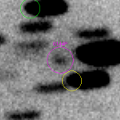
|
Now it is bright as 11.4 mag (Sept. 11, Alan Hale). It keeps locating low for a while. Juan Jose Gonzalez reported it so bright as 9.2 mag on Sept. 9.
Date(TT) R.A. (2000) Decl. Delta r Elong. m1 Best Time(A, h)
Sept.24 9 41.07 11 28.2 2.119 1.457 37 11.7 4:25 (268, 18)
Oct. 1 10 1.58 9 29.0 2.111 1.474 38 11.9 4:30 (272, 19)
|
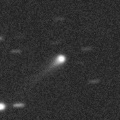
|
It brightened rapidly up to 13.4 mag (Aug. 31, Sandor Szabo). Juan Jose Gonzalez reported it so bright as 10.0 mag on Sept. 5.
Date(TT) R.A. (2000) Decl. Delta r Elong. m1 Best Time(A, h)
Sept.24 15 44.69 -16 10.5 2.359 1.990 56 12.3 19:18 ( 56, 16)
Oct. 1 16 0.68 -16 30.9 2.411 1.987 53 12.3 19:07 ( 56, 15)
|
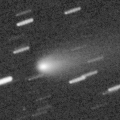
|
Now it is 11.3 mag (Sept. 1, Sandor Szabo). It is observable at 12 mag from summer to autumn, but it keeps low for some time. Juan Jose Gonzalez reported it so bright as 9.5 mag on Sept. 9.
Date(TT) R.A. (2000) Decl. Delta r Elong. m1 Best Time(A, h)
Sept.24 9 10.02 8 49.6 1.947 1.415 44 12.3 4:25 (275, 23)
Oct. 1 9 29.23 6 20.0 1.942 1.439 45 12.4 4:30 (280, 24)
|
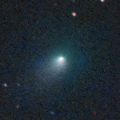
|
Now it is 13.1 mag (Sept. 19, Thomas Lehmann). It will be fading gradually after this. In the Northern Hemisphere, it keeps low for a long time after this.. In the Southern Hemisphere, it keeps observable in good condition for a long time.
Date(TT) R.A. (2000) Decl. Delta r Elong. m1 Best Time(A, h)
Sept.24 16 10.58 -26 4.1 1.783 1.626 64 12.5 19:18 ( 45, 13)
Oct. 1 16 32.49 -27 19.7 1.847 1.648 62 12.8 19:07 ( 43, 12)
|

|
It brightened up to 11 mag from spring to summer. Now it is not observable. It will be observable at 16 mag again in next spring.
Date(TT) R.A. (2000) Decl. Delta r Elong. m1 Best Time(A, h)
Sept.24 13 28.67 -7 1.9 2.607 1.719 22 13.0 19:18 ( 84, -5)
Oct. 1 13 47.13 -8 47.4 2.652 1.746 20 13.1 19:07 ( 83, -5)
|

|
Now it is so bright as 11.9 mag (Sept. 9, J. P. Navarro Pina). It will be low in November, but it keeps observable in good condition for a while.
Date(TT) R.A. (2000) Decl. Delta r Elong. m1 Best Time(A, h)
Sept.24 19 20.59 5 10.5 1.324 1.904 109 13.0 19:18 ( 6, 60)
Oct. 1 19 6.32 -0 29.8 1.486 1.919 99 13.3 19:07 ( 18, 53)
|
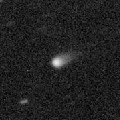
|
Now it is 13.3 mag (Sept. 5, Alan Hale). It is expected to brighten up to 7 mag in 2017 summer. In the Northern Hemisphere, it keeps observable in good condition until the highlight while the comet will be brightening. In the Southern Hemisphere, it is not observable until early 2017.
Date(TT) R.A. (2000) Decl. Delta r Elong. m1 Best Time(A, h)
Sept.24 11 0.60 48 53.8 4.120 3.578 51 13.3 4:25 (225, 22)
Oct. 1 11 14.93 48 22.8 4.005 3.512 54 13.2 4:30 (227, 25)
|

|
It brightened up to 8-9 mag from winter to spring. Now it is fading. It has already faded down to 12.9 mag (July 23, Chris Wyatt). It is not observable now. It will appear in the morning sky at 14 mag in November in the Northern Hemisphere, or in December in the Southern Hemisphere.
Date(TT) R.A. (2000) Decl. Delta r Elong. m1 Best Time(A, h)
Sept.24 12 23.59 3 29.4 4.806 3.811 6 13.3 19:18 (103,-12)
Oct. 1 12 28.96 2 10.9 4.865 3.869 5 13.4 4:30 (257,-15)
|

|
Now it is faint as 16.0 mag (Sept. 22, Jean-Francois Soulier). It is observable in excellent condition in the Southern Hemisphere.
Date(TT) R.A. (2000) Decl. Delta r Elong. m1 Best Time(A, h)
Sept.24 19 15.19 -25 6.6 5.549 5.902 105 13.5 19:18 ( 4, 30)
Oct. 1 19 16.20 -24 56.8 5.656 5.900 99 13.5 19:07 ( 9, 30)
|

|
It keeps unobservable for a long time. It will appear in the morning sky in December, when the comet will be fainter than 15 mag.
Date(TT) R.A. (2000) Decl. Delta r Elong. m1 Best Time(A, h)
Sept.24 11 27.36 -2 38.0 2.447 1.467 9 13.6 4:25 (265,-12)
Oct. 1 11 49.34 -4 39.7 2.472 1.497 10 13.7 4:30 (268,-11)
|
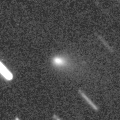
|
Now it is bright as 13.9 mag (Sept. 1, Sandor Szabo). It had been lost for a long time over 200 years since its discovery in 1783. In the Northern Hemisphere, it is observable in excellent condition from summer to winter. In the Southern Hemisphere, it keeps observable in good condition until November.
Date(TT) R.A. (2000) Decl. Delta r Elong. m1 Best Time(A, h)
Sept.24 5 24.07 14 29.5 1.315 1.785 99 13.9 4:25 (330, 67)
Oct. 1 5 29.05 17 35.5 1.246 1.793 105 13.9 4:30 (345, 72)
|
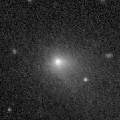
|
Now it is 13.0 mag (Sept. 1, Seiichi Yoshida). Distant object, but it keeps observable at 13-14 mag for a long time from 2015 to 2016.
Date(TT) R.A. (2000) Decl. Delta r Elong. m1 Best Time(A, h)
Sept.24 0 45.76 -1 50.2 3.971 4.961 169 13.9 0:35 ( 0, 53)
Oct. 1 0 43.62 -2 26.1 3.974 4.970 173 14.0 0:05 ( 0, 53)
|

|
Now it is 14.4 mag (Sept. 8, Katsumi Yoshimoto). It will be fading gradually after this. In the Northern Hemisphere, it keeps observable until early November. It becomes observable in the evening sky from July to September also in the Southern Hemisphere.
Date(TT) R.A. (2000) Decl. Delta r Elong. m1 Best Time(A, h)
Sept.24 15 35.99 16 41.1 3.831 3.356 54 14.3 19:18 ( 86, 35)
Oct. 1 15 41.39 14 30.5 3.942 3.398 50 14.4 19:07 ( 86, 31)
|
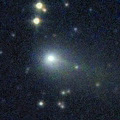
|
It brightened up to 12.5 mag in summer (Aug. 3, Marco Goiato). Now it is fading. It has already faded down to 14.0 mag (Sept. 1, Seiichi Yoshida). It keeps observable in good condition for a while.
Date(TT) R.A. (2000) Decl. Delta r Elong. m1 Best Time(A, h)
Sept.24 20 53.21 -17 16.4 1.947 2.701 129 14.6 20:39 ( 0, 38)
Oct. 1 20 55.73 -17 24.1 2.042 2.725 123 14.7 20:14 ( 0, 38)
|

|
It brightened up to 6 mag from autumn to winter. Now it is fading. It has already faded down to 14.6 mag (Sept. 9, Katsumi Yoshimoto). It is observable in good condition in the Northern Hemisphere. It is not observable after this in the Southern Hemisphere.
Date(TT) R.A. (2000) Decl. Delta r Elong. m1 Best Time(A, h)
Sept.24 5 55.74 53 46.0 4.256 4.400 91 14.6 4:25 (211, 67)
Oct. 1 5 49.71 54 32.1 4.216 4.473 98 14.6 4:30 (197, 69)
|
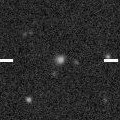
|
Now it is 16.4 mag (Aug. 12, Thomas Lehmann). It will be unobservable temporarily from summer to autumn. Then it will appear in the morning sky at 13 mag in December. It is expected to brighten up to 7 mag in 2017 spring. But it locates somewhat low at the high light.
Date(TT) R.A. (2000) Decl. Delta r Elong. m1 Best Time(A, h)
Sept.24 12 27.03 -6 39.2 4.353 3.363 8 15.0 19:18 ( 94,-17)
Oct. 1 12 35.50 -7 28.2 4.283 3.286 4 14.8 19:07 ( 94,-19)
|

|
Now it is 15.0 mag (Sept. 25, Alan Hale). In the Northern Hemisphere, it will be observable at 15 mag in good condition from September to October. In the Southern Hemisphere, it is not observable until November.
Date(TT) R.A. (2000) Decl. Delta r Elong. m1 Best Time(A, h)
Sept.24 11 31.60 68 30.7 0.409 0.939 69 15.3 4:25 (204, 27)
Oct. 1 13 58.48 82 50.9 0.403 1.057 86 14.9 19:07 (172, 36)
|
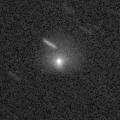
|
It has brightened in outburst up to 14 mag twice, in 2006 January and 2011 May. Third outburst occured on Aug. 28, and it brightened up to 14.8 mag (Aug. 30, Juan Jose Gonzalez). It is bright as 15.2 mag still now (Sept. 11, Thomas Lehmann). It is observable in good condition in autumn.
Date(TT) R.A. (2000) Decl. Delta r Elong. m1 Best Time(A, h)
Sept.24 1 20.75 6 12.8 5.366 6.319 160 15.2 1:09 ( 0, 61)
Oct. 1 1 18.38 5 55.2 5.350 6.331 167 15.3 0:40 ( 0, 61)
|
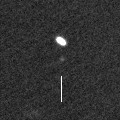
|
It is appearing in the morning sky in the Northern Hemisphere. It is expected to brighten up to 14 mag from winter to spring in 2017, and it will be observable in excellent condition in the Northern Hemisphere. In the Southern Hemisphere, it keeps extremely low until autumn, and it will be low also around the higlight.
Date(TT) R.A. (2000) Decl. Delta r Elong. m1 Best Time(A, h)
Sept.24 9 4.41 27 24.2 2.990 2.490 51 15.5 4:25 (258, 33)
Oct. 1 9 18.81 27 3.2 2.912 2.478 54 15.4 4:30 (260, 37)
|

|
Now it is very bright as 15.6 mag (Sept. 11, Hidetaka Sato). It will be observable at 11 mag for a long time from 2017 to 2018.
Date(TT) R.A. (2000) Decl. Delta r Elong. m1 Best Time(A, h)
Sept.24 3 50.93 -39 32.0 5.697 6.185 114 15.7 3:39 ( 0, 16)
Oct. 1 3 48.69 -40 5.5 5.611 6.134 117 15.6 3:09 ( 0, 15)
|

|
It has been lost since its discovery in 1978. In 2016, it is expected to return in excellent condition from autumn to winter.
Date(TT) R.A. (2000) Decl. Delta r Elong. m1 Best Time(A, h)
Sept.24 19 47.87 -31 29.0 0.685 1.408 111 15.9 19:34 ( 0, 24)
Oct. 1 19 59.76 -30 39.7 0.691 1.377 107 15.7 19:19 ( 0, 24)
|
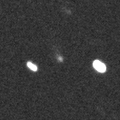
|
No observations have been reported since June. It will be unobservable after this in the Northern Hemisphere. It will be low from autumn to winter also in the Southern Hemisphere.
Date(TT) R.A. (2000) Decl. Delta r Elong. m1 Best Time(A, h)
Sept.24 13 10.53 -56 27.9 2.929 2.536 57 15.9 19:18 ( 40,-31)
Oct. 1 13 36.77 -55 33.9 3.025 2.570 54 16.1 19:07 ( 41,-30)
|

|
Appearing in the morning sky. It will be fading after this, but it will be observable at 17 mag in good condition in winter.
Date(TT) R.A. (2000) Decl. Delta r Elong. m1 Best Time(A, h)
Sept.24 10 0.87 10 7.6 2.906 2.128 32 16.0 4:25 (267, 13)
Oct. 1 10 15.01 9 4.2 2.881 2.148 35 16.5 4:30 (270, 16)
|
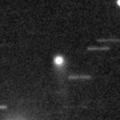
|
Now it is 15.2 mag (Sept. 23, Kunihiro Shima). It will brighten up to 14 mag from summer to winter in 2017. Then it will be observable in excellent condition in the Northern Hemisphere. In the Southern Hemisphere, it is hardly observable around the highlight.
Date(TT) R.A. (2000) Decl. Delta r Elong. m1 Best Time(A, h)
Sept.24 23 36.60 -17 13.0 3.645 4.605 161 16.1 23:21 ( 0, 38)
Oct. 1 23 28.98 -16 49.7 3.635 4.562 155 16.1 22:46 ( 0, 38)
|
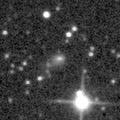
|
Now it is 16.2 mag (Aug. 31, Sandor Szabo). It will be observable at 13 mag for a long time from 2017 to 2018. In 2016, it keeps observable at 16 mag in good condition until autumn.
Date(TT) R.A. (2000) Decl. Delta r Elong. m1 Best Time(A, h)
Sept.24 18 35.87 -9 8.5 5.519 5.741 97 16.1 19:18 ( 19, 44)
Oct. 1 18 33.69 -9 1.6 5.601 5.699 90 16.1 19:07 ( 26, 42)
|
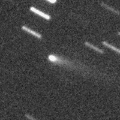
|
Now it is 15.3 mag (Sept. 23, Kunihiro Shima). It will be observable at 15-16 mag in good condition from autumn to winter. It locates somewhat low in the Southern Hemisphere.
Date(TT) R.A. (2000) Decl. Delta r Elong. m1 Best Time(A, h)
Sept.24 4 37.14 31 20.0 2.057 2.562 108 16.2 4:25 (358, 86)
Oct. 1 4 41.32 31 58.0 1.992 2.573 114 16.2 4:02 ( 0, 87)
|
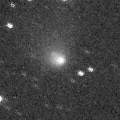
|
It brightened up to 13.0 mag in spring (May 6, Marco Goiato). It is already unobservable in the Northern Hemisphere. In the Southern Hemisphere, it will be getting lower gradually, and it will be unobservable in November.
Date(TT) R.A. (2000) Decl. Delta r Elong. m1 Best Time(A, h)
Sept.24 14 52.51 -34 12.0 2.990 2.497 51 16.3 19:18 ( 51, -5)
Oct. 1 15 6.82 -35 9.7 3.063 2.513 48 16.4 19:07 ( 51, -6)
|
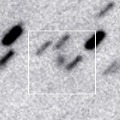
|
Now it is 16.5 mag (Apr. 5, Yasukazu Ikari). It keeps 16-17 mag for a long time from 2016 to 2019. It keeps locating near by the equator.
Date(TT) R.A. (2000) Decl. Delta r Elong. m1 Best Time(A, h)
Sept.24 9 6.29 2 58.3 10.443 9.755 44 16.4 4:25 (281, 20)
Oct. 1 9 9.07 2 46.7 10.354 9.747 50 16.4 4:30 (286, 26)
|

|
Now it is 16.5 mag (Aug. 25, Alexander Baransky). It will brighten up to 15 mag in winter. But it will be getting lower gradually after autumn.
Date(TT) R.A. (2000) Decl. Delta r Elong. m1 Best Time(A, h)
Sept.24 22 3.96 -10 45.5 1.390 2.304 148 16.5 21:49 ( 0, 44)
Oct. 1 21 59.09 -10 25.8 1.400 2.261 140 16.4 21:17 ( 0, 45)
|
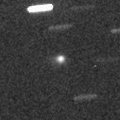
|
Now it is 16.3 mag (Aug. 31, Kunihiro Shima). It will brighten up to 13 mag and will be observable in good condition in 2017 summer. In 2016, it keeps observable until winter when it will brighten up to 15.5 mag. It locates somewhat low in the Southern Hemisphere.
Date(TT) R.A. (2000) Decl. Delta r Elong. m1 Best Time(A, h)
Sept.24 3 5.27 31 38.9 3.645 4.325 127 16.7 2:54 ( 0, 87)
Oct. 1 2 54.55 31 32.8 3.502 4.276 135 16.5 2:16 ( 0, 87)
|
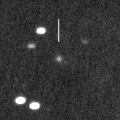
|
Now it is 18.5 mag (Aug. 11, CAO, San Pedro de Atacama). It will be observable at 16 mag in good condition from autumn to winter. It locates low in the Southern Hemisphere.
Date(TT) R.A. (2000) Decl. Delta r Elong. m1 Best Time(A, h)
Sept.24 7 9.54 24 5.3 4.022 3.891 75 16.8 4:25 (278, 55)
Oct. 1 7 14.96 24 4.8 3.912 3.882 80 16.7 4:30 (284, 61)
|

|
Now it is 16.5 mag (Aug. 31, Sandor Szabo). It keeps 16.5 mag from 2016 to 2017. It is observable in good condition in the Northern Hemisphere. In the Southern Hemisphere, it locates low in 2016, and it is not observable in 2017.
Date(TT) R.A. (2000) Decl. Delta r Elong. m1 Best Time(A, h)
Sept.24 16 37.80 33 22.2 6.498 6.267 72 16.8 19:18 (100, 54)
Oct. 1 16 40.70 33 6.5 6.545 6.263 69 16.8 19:07 (101, 51)
|
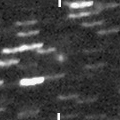
|
Now it is 16.6 mag (Aug. 4, A. Diepvens). It keeps 16-17 mag and keeps observable in good condition until autumn.
Date(TT) R.A. (2000) Decl. Delta r Elong. m1 Best Time(A, h)
Sept.24 17 59.14 -12 25.1 2.377 2.558 88 16.9 19:18 ( 29, 38)
Oct. 1 18 6.95 -12 37.0 2.446 2.542 83 16.9 19:07 ( 32, 37)
|
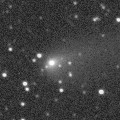
|
It was observed at 13 mag for a long time from winter to early summer. Now it is fading. It has already faded down to 16.8 mag (Aug. 16, CAO, San Pedro de Atacama). It is observable in good condition in the Southern Hemisphere. But it locates somewhat low in the Northern Hemisphere.
Date(TT) R.A. (2000) Decl. Delta r Elong. m1 Best Time(A, h)
Sept.24 16 37.76 -25 19.7 2.943 2.772 70 16.9 19:18 ( 40, 17)
Oct. 1 16 48.34 -25 35.1 3.053 2.797 65 17.1 19:07 ( 42, 16)
|

|
Now it is 17.8 mag (Sept. 1, Kunihiro Shima). It will brighten up to 15 mag and will be observable in good condition from autum to winter in 2017. In the Northern Hemisphere, it keeps observable in good condition for a long time while the comet will be brightening. It is not observable until 2017 summer in the Southern Hemisphere.
Date(TT) R.A. (2000) Decl. Delta r Elong. m1 Best Time(A, h)
Sept.24 5 3.51 58 43.3 5.382 5.614 98 17.1 4:25 (189, 66)
Oct. 1 4 55.99 59 8.8 5.243 5.579 104 17.1 4:17 (180, 66)
|

|
It brightened up to 15 mag from late 2014 to early 2016. Now it is fading slowly. Now it is 16.7 mag (Sept. 2, Kunihiro Shima). In the Northern Hemisphere, it will be observable at 16-17 mag in autumn in good condition. It locates extremely low in the Southern Hemisphere.
Date(TT) R.A. (2000) Decl. Delta r Elong. m1 Best Time(A, h)
Sept.24 22 9.83 42 53.3 4.536 5.243 130 17.1 21:54 (180, 82)
Oct. 1 21 59.52 42 2.2 4.592 5.277 128 17.1 21:16 (180, 83)
|
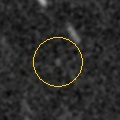
|
First return of a new periodic comet discovered in 2007. Now it is 19.4 mag (Sept. 1, K. Sarneczky, P. Szekely). It was expected to brighten up to 16.5 mag and will be observable in good condition from autumn to winter. But actually, it is fainter than predicted by 1.5 mag.
Date(TT) R.A. (2000) Decl. Delta r Elong. m1 Best Time(A, h)
Sept.24 3 41.86 -11 26.4 1.794 2.505 124 17.3 3:30 ( 0, 44)
Oct. 1 3 43.06 -12 5.6 1.720 2.480 129 17.1 3:04 ( 0, 43)
|
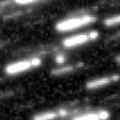
|
Now it is 16.9 mag (July 30, Yasukazu Ikari). It will brighten up to 16 mag and will be observable in good condition in 2017. In 2016, it is observable in excellent condition in the Southern Hemisphere, but it keeps low in the Northern Hemisphere.
Date(TT) R.A. (2000) Decl. Delta r Elong. m1 Best Time(A, h)
Sept.24 18 45.82 -35 27.6 2.864 3.167 98 17.1 19:18 ( 10, 19)
Oct. 1 18 50.85 -34 48.1 2.943 3.150 92 17.2 19:07 ( 13, 19)
|
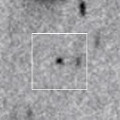
|
Now it is 18.1 mag (Sept. 23, Kunihiro Shima). It will pass the perihelion on Mar. 10, 2017. In the Northern Hemisphere, it keeps observable in the evening sky until late February while the comet will be brightening up to 8.5 mag. In the Southern Hemisphere, it will appear in the morning sky in late March at 8 mag, then it keeps observable while the comet will be fading.
Date(TT) R.A. (2000) Decl. Delta r Elong. m1 Best Time(A, h)
Sept.24 0 31.89 15 25.8 1.501 2.479 163 17.6 0:21 ( 0, 71)
Oct. 1 0 19.43 14 41.3 1.429 2.418 168 17.3 23:36 ( 0, 70)
|

|
It will pass the perihelion in 2019. However, it has not been brightening since the discovery in 2010. Now it is 18.1 mag (Aug. 10, D. Buczynski). It keeps observable in excellent condition in the Northern Hemisphere. It is not observable in the Southern Hemisphere.
Date(TT) R.A. (2000) Decl. Delta r Elong. m1 Best Time(A, h)
Sept.24 4 43.99 57 48.2 9.662 9.901 100 17.4 4:25 (183, 67)
Oct. 1 4 43.34 58 23.9 9.552 9.880 106 17.4 4:04 (180, 67)
|
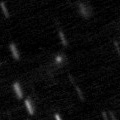
|
Now it is 18.0 mag (July 24, CAO, San Pedro de Atacama). It keeps 17 mag for a long time in 2016, and it will be observable in excellent condition in the Southern Hemisphere. It is hardly observable in the Northern Hemisphere.
Date(TT) R.A. (2000) Decl. Delta r Elong. m1 Best Time(A, h)
Sept.24 1 46.43 -52 2.1 2.966 3.615 123 17.4 1:36 ( 0, 3)
Oct. 1 1 24.05 -52 8.2 2.989 3.638 123 17.5 0:46 ( 0, 3)
|
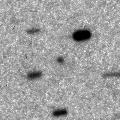
|
Now it is 17.9 mag (Aug. 28, Alexander Baransky). It will be observable at 17.5 mag in good condition in autumn.
Date(TT) R.A. (2000) Decl. Delta r Elong. m1 Best Time(A, h)
Sept.24 22 57.60 3 12.2 1.545 2.522 163 17.5 22:42 ( 0, 58)
Oct. 1 22 54.25 2 41.8 1.549 2.498 156 17.4 22:12 ( 0, 58)
|
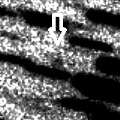
|
Now it is 18.7 mag (Aug. 4, Jean-Francois Soulier). In the Northern Hemisphere, it is observable at 17.5 mag in excellent condition from autumn to winter. It keeps extremely low in the Southern Hemisphere.
Date(TT) R.A. (2000) Decl. Delta r Elong. m1 Best Time(A, h)
Sept.24 8 18.80 29 55.3 2.466 2.176 61 17.5 4:25 (260, 43)
Oct. 1 8 34.45 30 10.2 2.405 2.183 65 17.5 4:30 (262, 47)
|

|
It brightened up to 13-14 mag from 2014 to 2015. Now it is fading. It has already faded down to 17.1 mag (Sept. 23, Kunihiro Shima). It will be fainter than 18 mag in October.
Date(TT) R.A. (2000) Decl. Delta r Elong. m1 Best Time(A, h)
Sept.24 23 5.83 -6 36.6 4.854 5.824 163 17.6 22:51 ( 0, 48)
Oct. 1 23 3.55 -6 58.4 4.938 5.869 156 17.7 22:21 ( 0, 48)
|
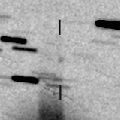
|
First return of a new periodic comet discovered in 2005. Now it is 18.9 mag (Aug. 28, K. Sarneczky, P. Szekely). In the Northern Hemisphere, it will be observable at 17 mag in excellent condition in winter. It locates somewhat low in the Southern Hemisphere.
Date(TT) R.A. (2000) Decl. Delta r Elong. m1 Best Time(A, h)
Sept.24 3 58.86 23 57.6 2.212 2.832 118 17.7 3:47 ( 0, 79)
Oct. 1 4 0.79 24 4.6 2.133 2.828 124 17.7 3:22 ( 0, 79)
|

|
It is 17.3 mag now (Sept. 23, Kunihiro Shima). It was expected to brighten up to 16 mag and observable in good condition in autumn. But actually, it is fainter than originally predicted.
Date(TT) R.A. (2000) Decl. Delta r Elong. m1 Best Time(A, h)
Sept.24 22 43.96 -11 54.4 1.802 2.752 156 17.7 22:29 ( 0, 43)
Oct. 1 22 39.84 -11 44.0 1.828 2.735 148 17.7 21:57 ( 0, 43)
|
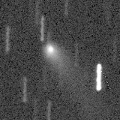
|
It was observed at 14-15 mag from 2014 to 2015. Now it is fading. It has already faded down to 18.1 mag (Sept. 1, Kunihiro Shima). In the Northern Hemisphere, it keeps observable in excellent condition until winter when the comet will be fainter than 18 mag. It is not observable in the Southern Hemisphere.
Date(TT) R.A. (2000) Decl. Delta r Elong. m1 Best Time(A, h)
Sept.24 4 58.60 79 26.9 5.926 6.069 93 17.7 4:25 (182, 45)
Oct. 1 4 58.35 80 36.9 5.911 6.110 96 17.7 4:21 (180, 44)
|
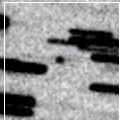
|
Now it is 18.2 mag (Aug. 25, Michael Jager). In the Northern Hemisphere, it will be observable at 17 mag in excellent condition in winter. It locates low in the Southern Hemisphere.
Date(TT) R.A. (2000) Decl. Delta r Elong. m1 Best Time(A, h)
Sept.24 6 46.63 31 32.0 3.398 3.393 81 17.8 4:25 (268, 63)
Oct. 1 6 53.90 31 41.6 3.301 3.390 86 17.7 4:30 (271, 68)
|
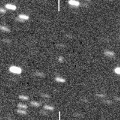
|
First return of a new periodic comet discovered in 2008. Now it is 19.4 mag (Sept. 1, Kunihiro Shima), fainter than this ephemeris.
Date(TT) R.A. (2000) Decl. Delta r Elong. m1 Best Time(A, h)
Sept.24 20 4.86 -19 15.5 2.474 3.077 118 17.7 19:51 ( 0, 36)
Oct. 1 20 7.12 -19 7.4 2.557 3.073 111 17.8 19:25 ( 0, 36)
|
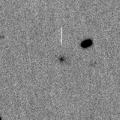
|
First return of a new periodic comet which brightened up to 16.5 mag in 2008. The condition of this apparition is very good. It was expected to brighten up to 15.5 mag in autumn and will be observable in good condition. But actually, it is 17.4 mag (Aug. 31, Kunihiro Shima), fainter than originally expected by 2-3 mag.
Date(TT) R.A. (2000) Decl. Delta r Elong. m1 Best Time(A, h)
Sept.24 23 49.91 -13 10.1 1.356 2.341 165 17.9 23:34 ( 0, 42)
Oct. 1 23 41.77 -12 7.5 1.364 2.333 160 17.9 22:59 ( 0, 43)
|
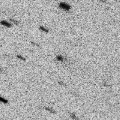
|
Now it is 17.0 mag (Aug. 31, Kunihiro Shima). It is observable at 18 mag in excellent condition in autumn.
Date(TT) R.A. (2000) Decl. Delta r Elong. m1 Best Time(A, h)
Sept.24 1 35.13 8 24.2 1.705 2.653 156 17.9 1:24 ( 0, 63)
Oct. 1 1 30.95 8 10.7 1.692 2.668 163 17.9 0:52 ( 0, 63)
|
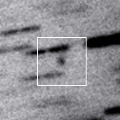
|
Now it is 17.4 mag (July 2, G. Gunn, G. W. Christie). It keeps observable at 17.5 mag in good condition from spring to autumn in the Southern Hemisphere. It is not observable in the Northern Hemisphere.
Date(TT) R.A. (2000) Decl. Delta r Elong. m1 Best Time(A, h)
Sept.24 17 58.57 -55 37.4 4.886 4.968 88 17.9 19:18 ( 13, -3)
Oct. 1 18 5.53 -54 48.0 4.974 4.969 83 17.9 19:07 ( 15, -2)
|
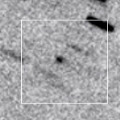
|
Now it is 18.6 mag (Aug. 31, Kunihiro Shima). It is observable at 18 mag in excellent condition in autumn.
Date(TT) R.A. (2000) Decl. Delta r Elong. m1 Best Time(A, h)
Sept.24 1 5.17 3 35.6 1.623 2.604 164 17.9 0:54 ( 0, 59)
Oct. 1 1 0.54 3 19.3 1.618 2.614 172 17.9 0:22 ( 0, 58)
|

|
Now it is 17.9 mag (Aug. 8, J. Gonzalez). It keeps 17-18 mag until autumn. It keeps observable in excellent condition in the Northern Hemisphere. It will be getting lower gradually in the Southern Hemisphere.
Date(TT) R.A. (2000) Decl. Delta r Elong. m1 Best Time(A, h)
Sept.24 18 52.19 36 28.2 2.052 2.434 99 17.9 19:18 (103, 82)
Oct. 1 18 43.92 35 50.8 2.167 2.462 94 18.1 19:07 ( 98, 77)
|
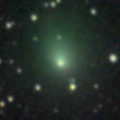
|
It brightened up to 10 mag in 2015 autumn. Now it is fading. It has already faded down to 17.8 mag (Aug. 26, Alexander Baransky). It will be fainter than 18 mag soon.
Date(TT) R.A. (2000) Decl. Delta r Elong. m1 Best Time(A, h)
Sept.24 3 38.44 13 21.4 2.520 3.207 125 17.9 3:27 ( 0, 68)
Oct. 1 3 35.78 13 2.9 2.479 3.245 132 18.0 2:57 ( 0, 68)
|
|
![]()
 174P/(60558) 2000 EC98 ( Echeclus )
174P/(60558) 2000 EC98 ( Echeclus ) 315P/2013 V6 ( LONEOS )
315P/2013 V6 ( LONEOS ) C/2016 R2 ( PanSTARRS )
C/2016 R2 ( PanSTARRS ) D/1978 R1 ( Haneda-Campos )
D/1978 R1 ( Haneda-Campos ) C/2015 T4 ( PanSTARRS )
C/2015 T4 ( PanSTARRS ) 118P/Shoemaker-Levy 4
118P/Shoemaker-Levy 4 C/2016 N4 ( MASTER )
C/2016 N4 ( MASTER ) C/2015 O1 ( PanSTARRS )
C/2015 O1 ( PanSTARRS ) 56P/Slaughter-Burnham
56P/Slaughter-Burnham 77P/Longmore
77P/Longmore C/2014 B1 ( Schwartz )
C/2014 B1 ( Schwartz ) 93P/Lovas 1
93P/Lovas 1 C/2015 VL62 ( Lemmon-Yeung-PanSTARRS )
C/2015 VL62 ( Lemmon-Yeung-PanSTARRS ) 74P/Smirnova-Chernykh
74P/Smirnova-Chernykh C/2014 OE4 ( PanSTARRS )
C/2014 OE4 ( PanSTARRS ) 219P/LINEAR
219P/LINEAR 116P/Wild 4
116P/Wild 4 C/2015 V1 ( PanSTARRS )
C/2015 V1 ( PanSTARRS ) C/2014 A4 ( SONEAR )
C/2014 A4 ( SONEAR ) P/2016 R1 ( Catalina )
P/2016 R1 ( Catalina ) 47P/Ashbrook-Jackson
47P/Ashbrook-Jackson 2P/Encke
2P/Encke C/2010 U3 ( Boattini )
C/2010 U3 ( Boattini ) C/2015 B2 ( PanSTARRS )
C/2015 B2 ( PanSTARRS ) 343P/2016 P3 ( NEAT-LONEOS )
343P/2016 P3 ( NEAT-LONEOS ) 33P/Daniel
33P/Daniel C/2012 F3 ( PanSTARRS )
C/2012 F3 ( PanSTARRS ) P/2016 Q1 ( Read )
P/2016 Q1 ( Read ) 188P/LINEAR-Mueller
188P/LINEAR-Mueller C/2014 N3 ( NEOWISE )
C/2014 N3 ( NEOWISE ) P/2015 TP200 ( LINEAR )
P/2015 TP200 ( LINEAR ) 340P/2016 N2 ( Boattini )
340P/2016 N2 ( Boattini ) 338P/2016 N1 ( McNaught )
338P/2016 N1 ( McNaught ) 341P/2016 N3 ( Gibbs )
341P/2016 N3 ( Gibbs ) C/2015 H2 ( PanSTARRS )
C/2015 H2 ( PanSTARRS ) 208P/McMillan
208P/McMillan C/2016 K1 ( LINEAR )
C/2016 K1 ( LINEAR ) 22P/Kopff
22P/Kopff![]()





















































